At WOLACO (Way of Life Athletic Company), we make technical active apparel for high-performance guys. We sell a physical product: compression gear. The gear is smart. It’s well-designed. It’s one of a kind. And we make everything right here in the USA. We’re also building a brand that guys are starting to connect strongly with.
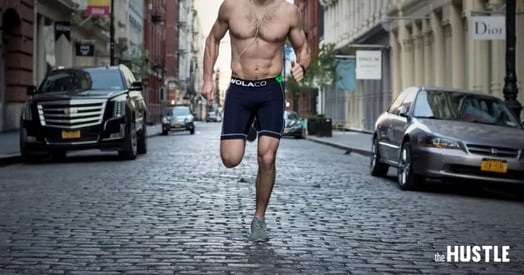
We believe these are all good, necessary things and important criteria for running a successful ecommerce business. But in no way do they guarantee success.
The key to our success? Getting ridiculously good at bootstrapping.
Since launching on Kickstarter 2 years ago, we’ve survived by becoming pros at finding super scrappy ways to cut costs, sell to our customers directly, and generate revenue on an ongoing basis.
But bootstrapping our business hasn’t just enabled us to scrape by and survive. It’s become our biggest strength as an e-commerce company.
It’s forced us to get creative and gutsy. To become more authentic and customer-facing. It’s helped us grow and connect with our audience in ways that we simply wouldn’t have with the safety net of initial angel funding.
We’re a young team (relatively speaking, at least…we’re all in our 20s). None of us have MBAs. Our friends aren’t in a position to invest in us financially. And, I mean, who’s actually going to invest in a bunch of 20-somethings who claim they’re gonna be the next big active apparel brand? It’s a difficult sell to anyone. We couldn’t bank on early investor funding.
So we took matters into our own hands.
From building the foundation of our business on Kickstarter to driving sales with offbeat, face-to-face marketing campaigns, we’ve fought with tooth and nail towards profitability. We’ve relied on (and truly believe in) brand equity and organic marketing.
So here’s the deal. We’re now at our 2 year mark as a company and we’re closing out our first round of meaningful seed funding. As we look back, we wanted to share with you our early startup journey. The lessons we’ve gleaned and hiccups we’ve had. All while remaining lean, thrifty, and extremely scrappy.
Phase 1: The North Moore Short
I started with $5,000, 12 rounds of prototypes of a product (with a factory that I found on Google), and several pounds of sweat (from testing each prototype).
I had a full-time job that I kept for a while, which helped me mitigate risk early on. I made time every evening after work and on weekends. I saved money by doing as much work as possible myself.
I sourced materials by leveraging resources like Alibaba (pre-IPO). I bought fabric that was in stock to avoid being bound to large order minimums. I became a designer. I used online services to help me with idea generation for logo creative and branding.
But in order for any of these bootstrapping tactics to work, you’ve got to start with an awesome product that will truly enhance people’s lives. If the product sucks (or is even just mediocre), you can forget everything else.
I founded WOLACO with a unique product, The North Moore Short. A dual-pocketed compression short built to meet the needs of active guys like myself.

Approaching product development, I knew if I could deliver on 3 main product criteria that I’d be creating something marketable. A product that met or surpassed the Quality of what was in the market, a distinguishable Design that spoke to the future of the WOLACO brand, and lastly, a unique functionality that didn’t yet exist. Big brands can rarely hit all 3 of these things.
1. Unique Functionality
I created a simple solution to an extremely frustrating everyday problem. As an active guy living in New York City, I found it baffling that there was no good place to store your phone, keys, cash, or credit card while running or working out. I felt this product could dramatically improve my active routine (as well as a lot of guys like me).
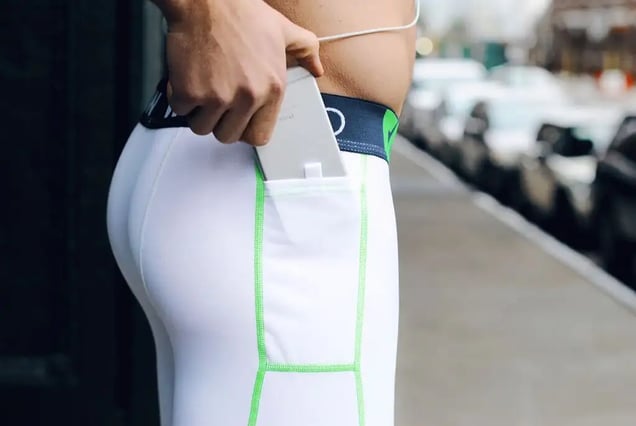
2. Quality
Truth is, most compression shorts suck. They’re made overseas with frail, cheapjack fabrics and do little more than hold your manhood in place. I wanted to treat compression shorts as true gear. Not as sweat-wicking underwear. Essentially, I wanted to re-imagine the purpose of compression shorts.
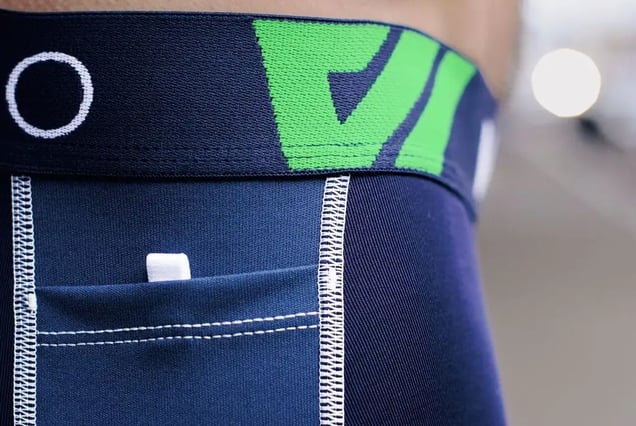
3. Design
The North Moore Short is an undergarment, but that didn’t matter to me. As soon as guys slide into these bad boys, I want them to feel a certain confidence and energy. Tacky as this might sound, I’m a strong believer in Deion Sander’s famous quote: “If you look good, you feel good. If you feel good, you play good. If you play good, they pay good.”
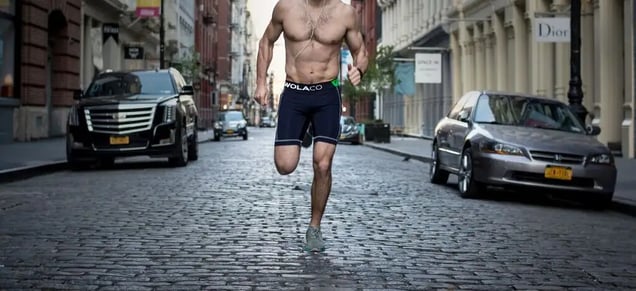
Phase 2: Kickstarter
At this point, all we had was an awesome product that we believed in completely. We hadn’t received any investment, so we couldn’t afford materials and production (the 2 biggest expenses of any consumer goods brand).
Moreover, no one knew about the North Moore Short. We needed to create the awareness and demand for it ourselves through a grassroots marketing campaign. So after pre-sales with family and friends, we used Kickstarter to 1) create demand, 2) reach a lot of people really quickly, and 3) bring in revenue to fund our production.
Here’s what happened:
– We hit our fundraising goal of 28K in 40 hours
– Over the course of 30 days, we sold 2,300 units of the North Moore Short to 1,465 people in over 40 different countries
– We soared past our goal by 400%, raising 120K
The best thing about launching on Kickstarter? It allowed us to connect with potential customers in an authentic and consistent way. By speaking with our supporters over email, day after day, with exciting updates about our company and the campaign, we won over an incredibly loyal group of customers.
Thanks to Kickstarter, we had 1,445 of the best brand advocates right out of the gate.
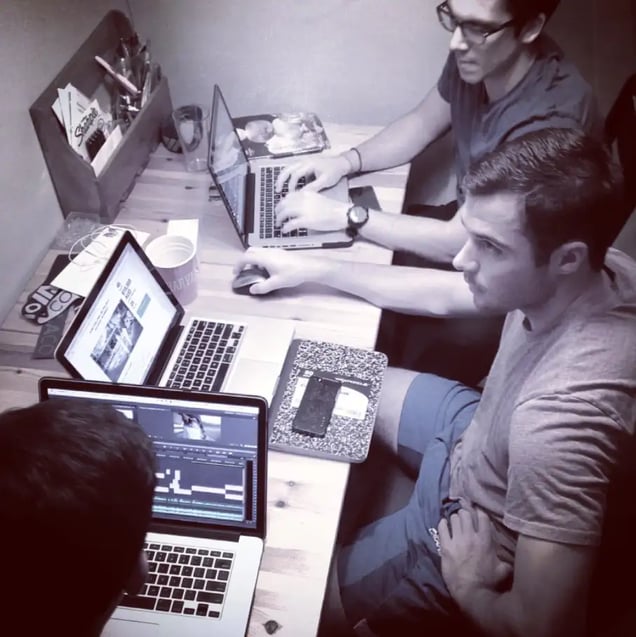
Biggest takeaway from Kickstarter
It taught me how to market a product — the core expertise of any e-commerce business. Now I look at every new product launch as a new Kickstarter campaign. And if I find I’m not treating it that way, then I’m probably not doing enough to market that launch.
People will ask me what’s my biggest piece of advice I’d give to someone launching a product on Kickstarter. And I’d say it’s to over-prepare. Honestly. The potential for success on Kickstarter is infinite. So prepare. Network. Do everything in your power to tell everyone you’ve ever known that you’re working on something special. Kickstarter will not sell your product, they are just providing you a platform that is optimized and gives you the best chance to be successful. Assuming you put in the work to prepare properly.
Lastly, people are giving you money… for a product that doesn’t exist yet. So help them feel comfortable and build a kickass, well designed kickstarter page with a quality video, good-looking graphic design, and smart, engaging copy. Otherwise, why would anybody trust you? You’re asking people you’ve never met to give you their money, to execute something you have zero experience doing. The details are important.
Phase 3: Become an e-commerce business
At this stage, everyone’s telling you how great you are. That you need to raise loads of cash and really take this thing to the moon and back!
And it was tempting to think about our business as a spaceship about to take off. That all we needed was serious investor money. This is the Silicon Valley mindset… that is, to get really big really, really fast by paying your way to revenue. But it felt too soon for this (selling a good portion of the business for capital that I didn’t truly know how to spend yet).
Sure, we could have found ways to spend funds that would have likely resulted in revenue. But we would also spend money recklessly. It’s inevitable, that’s how you learn.
So rather than doing that, I wanted to market the business and sell our products in a lean fashion with limited capital. I actually started to view having limited funding as an advantage. Why? Because it ensured that we would be hyper-focused in our decision-making and remain scrappy. We are young, we are passionate, we have the energy to go this route.
As a new ecommerce business, our goals were simple. Generate revenue on an ongoing basis, grow revenue over time, work towards profitability. Sell product and acquire customers.
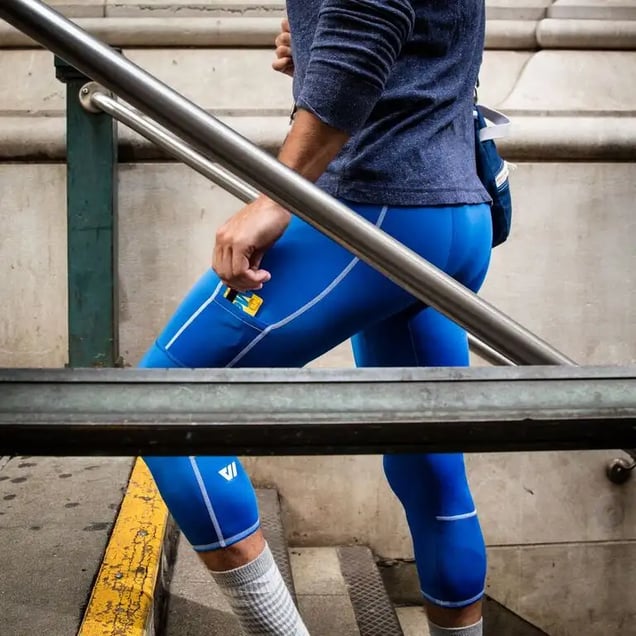
Phase 4: Organic Marketing (we took it into our own hands)
In the beginning, there’s no avoiding the fact that you’re going to fail at marketing. So fail… but fail inexpensively (without losing a lot of someone else’s money). Once you’ve failed enough, then spend money strategically.
OK, great. But how do you fail inexpensively?
Try a lot, learn from your failures (quickly) and react accordingly. Do everything in your power to not allow these failures to be at the expense of a family friend who gave you 20K to “get started”.
Get out and take it into your own hands. We’ve broken it down into 3 digestible categories that have worked well with us:
Experiential Marketing
This is our brand. This is essentially why we started our business. To get out and actually live the lifestyle that we promote ad nauseum. This was our opportunity to engage with our community of guys in an authentic, grassroots, and value-add way that big brands can’t.
So we started hosting free workouts, every Wednesday morning at 6:30 a.m, on a turf field in TriBeCa. We’d either personally lead a class of 10-20 guys and gals or we’d recruit an instructor (who would teach the class for exposure to a new audience of active guys).
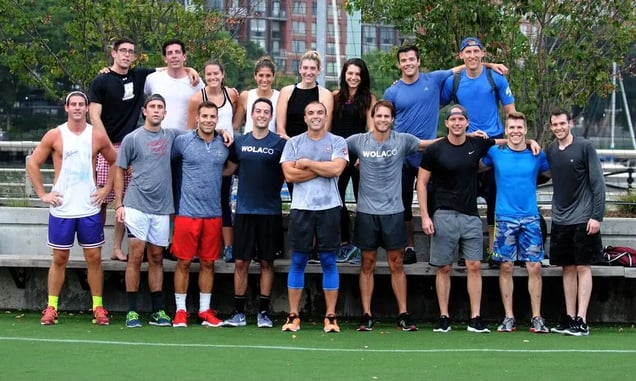
We also partnered with the Sean Kimerling Testicular Cancer Foundation and got about 100 of our guys into our compression shorts and onto the streets of New York City to raise awareness for an awesome cause.
And finally, we launched a Hand-Delivery Day in NYC, where we literally ran product to any customer in NYC who made a purchase. The engagement we got from our customers was incredible. Also gave us a nice little bump in sales.
Content Marketing
We focused on producing stories that we, ourselves, would actually want to read. Plus, telling stories about our customers and inspirational figures who represent WOLACO was a great way to substantiate our brand.
As such, we:
– Partnered with the best Spikeball team in the country, hooked them up with gear, and documented their journey at Coney Island
– Sat down with NHL Hall-of-Fame defenseman, Scott Stevens
– Started interviewing awesome, high-performing guys in their 20s and 30s doing ridiculous things. Like Ironman triathlete Rob Mohr and para-athlete Glenn Hartrick.
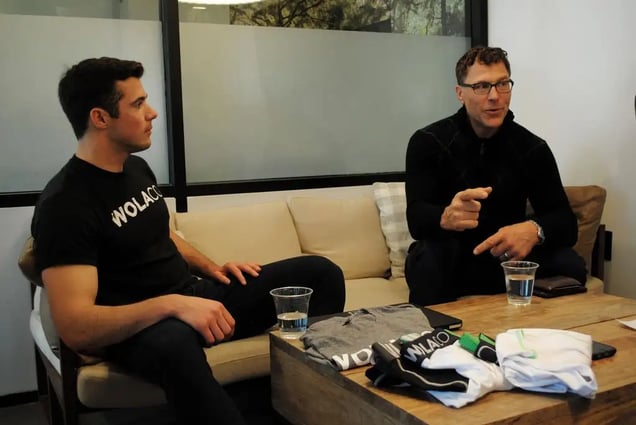
Partnerships
We aligned with other brands that have similar core values. This can mean ecommerce companies, blogs, non-profits, influencers, and beyond.
Each partnership is different, but by establishing relationships with complementary brands we have been able to share audience and add value to our existing customer base.
Conclusion
By taking marketing and growth strategy into our own hands, we’ve developed a collective confidence as a team. Choosing not to farm out certain components of our business, we have more control over our own destiny as a business. Consequently, our brand has developed organically and remains as authentic as they come.
Fast forward about 2 years, and we’re (almost) profitable. We’re just now closing out our first round of seed funding.
Check out our website if you need some new workout gear. Also makes for a great Xmas present!
